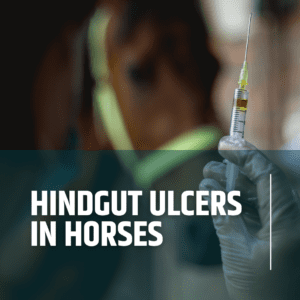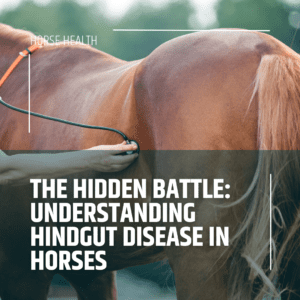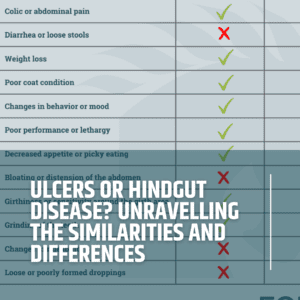
01
Why Rain after Drought is Different
During drought, stressed grasses store soluble sugars, known as non-structural carbohydrates (NSC), at their bases. When rainfall returns—particularly if temperatures remain warm—these sugars rapidly mobilise into new, lush growth. This growth is notably lower in fibre but significantly higher in water-soluble carbohydrates (WSC) and fructans [1].
Key takeaway: This "green flush" can effectively double the sugar intake your horse experiences compared to normal summer grazing conditions.
02
Plant Physiology: How Rain after Drought Alters Sugar Chemistry
Research on ryegrass clearly demonstrates that plants draw upon their WSC reserves for regrowth after periods of drought or cutting. They only replenish these reserves once photosynthesis surpasses the immediate growth demands [2]. The sudden arrival of water following drought stimulates rapid leaf growth before these sugar reserves have been diluted, creating a surge of sugar-rich, fibre-poor grass.
03
Quantified Sugar Spikes in Early Grass Regrowth
A study published in December 2023 in the Journal of Animal Science found that early-cut perennial ryegrass contained approximately 40% more WSC and was 10% more digestible in caecum-based assays compared to grass harvested three weeks later [3]. These levels closely resemble conditions observed in UK pastures following mid-summer rainfall.
04
The Effect on the Equine Hindgut
Excessive WSC bypasses digestion in the small intestine, flooding into the caecum. Within just 24 hours, this leads to:
• Rapid proliferation of lactic acid-producing bacteria (especially Streptococcus species).
• Significant pH drop from around 6.9 to below 6.2.
• A collapse of beneficial fibre-digesting microbial populations.
These changes, clearly demonstrated in oligofructose-challenge models [4, 5], highlight the direct link between sudden sugar influxes and hindgut acidosis.
05
Seasonal and Weather-Induced Microbiome Changes
Research tracking pasture-fed horses over a full year in New Zealand revealed significant seasonal shifts in gut microbiome diversity (measured by the Shannon index), peaking during wetter months. The microbial community also shifted towards a higher ratio of Firmicutes to Bacteroidetes—reflecting a diet rich in sugars following rainfall [6].
06
Clinical Relevance: Heightened Laminitis Risk
Rain-triggered spikes in NSC levels are a widely recognised environmental trigger for "pasture-associated laminitis" [7]. Horses with insulin dysregulation, obesity, or a history of laminitis are particularly at risk. However, even healthy horses can exhibit colic, bloating, or behavioural changes when the hindgut pH rapidly declines.
07
Practical Management Tips Following Heavy Rain
- Implement strip grazing or use a muzzle – Physically restricts sugar intake
- Turn out horses before noon – NSC levels are lowest from overnight to morning
- Provide ad-lib or soaked hay – Adds buffering fibre, slowing overall sugar intake
- Use hindgut-support supplements like EquiNectar – EquiNectar delivers a spectrum of digestive enzymes that stabilise hindgut fermentation
- Administer activated charcoal (EquiCharcoal) – EquiCharcoal helps absorb gas and toxins, offering immediate relief and protection over a few days
- Monitor early signs – Check for warm hooves, loose droppings, gait changes
Evidence for Activated Charcoal (EquiCharcoal)
A 2016 in vitro study examined the effect of activated charcoal on microbial fermentation in the equine hindgut. Results showed no significant impact on gas production, pH, volatile fatty acids, or ammonia—indicating that charcoal does not disrupt normal microbial activity [8].
Moreover, activated charcoal is known to help reduce gas and bind mild toxins in the fore- and mid-gut, making it a useful short-term support during digestive upset, lush grazing, or mild colic episodes [8].
Evidence for EquiNectar
Scientific evidence strongly supports the use of digestive enzyme supplements such as EquiNectar to enhance equine digestive health:
- Research published in the Journal of Equine Veterinary Science demonstrates that enzyme supplementation significantly enhances digestibility, improves fibre digestion efficiency, and increases starch breakdown and absorption—reducing risks associated with dietary starch overload [9].
EquiNectar-specific research has further established its beneficial impact:
- EquiNectar has been shown to support gut health and improve feed efficiency [10].
- Additional studies demonstrate positive modulation of the equine gut microbiome and overall well-being [11].
- Research also highlights EquiNectar’s ability to beneficially influence microbial communities, aiding digestive stability [12].
08
Key Points to Remember
- Rain following drought triggers rapid grass growth high in sugars.
- Tender, sugar-rich grass can quickly overwhelm the horse's hindgut.
- Documented microbial shifts in response to sugar spikes precede laminitis and colic.
- Effective management includes limiting grazing time and ensuring fibre availability.
References
1. Stang F L, Bjerregaard R, Müller C E et al. (2023) The effect of harvest time of forage on carbohydrate digestion in horses quantified by in vitro and mobile bag techniques. Journal of Animal Science, 101, skac422.
2. Fulkerson W J & Donaghy D J (2001) Plant-soluble carbohydrate reserves and senescence—key criteria for developing an effective grazing management system for ryegrass-based pastures: a review. Australian Journal of Experimental Agriculture, 41, 261–275.
3. Donaghy D J & Fulkerson W J (1998) Priority for allocation of water-soluble carbohydrate reserves during regrowth of Lolium perenne. Grass & Forage Science, 53, 211–218.
4. Milinovich G J, Burrell P C, Pollitt C C et al. (2008) Microbial ecology of the equine hindgut during oligofructose-induced laminitis. ISME Journal, 2, 1089–1100.
5. Milinovich G J, Trott D J, Burrell P C et al. (2006) Changes in equine hindgut bacterial populations during oligofructose-induced laminitis. Environmental Microbiology, 8, 885–898.
6. Fernandes K A, Gee E K, Rogers C W et al. (2021) Seasonal variation in the faecal microbiota of mature adult horses maintained on pasture in New Zealand. Animals, 11, 2300.
7. Geor R J (2009) Pasture-associated laminitis. Veterinary Clinics of North America: Equine Practice, 25, 39–50.
8. Yuyama K, Takahashi M, Takehana K et al. (2016) Effect of activated charcoal on gas production, pH and microbial fermentation in an in vitro model of the equine hindgut. Journal of Equine Science, 27(2), 49–55.
9. Kholif A E, Morsy T A, Gouda G A et al. (2015) In Vitro Assessment of Fecal Inocula From Horses Fed on High-Fiber Diets With Fibrolytic Enzymes Addition on Gas, Methane, and Carbon Dioxide Productions as Indicators of Hindgut Activity. Journal of Equine Veterinary Science, 35(5), 401–407.
10. Proudman C J, Edwards G B, Barnes J et al. (2014) Faecal microbiome of the Thoroughbred racehorse and its response to dietary amylase supplementation. Equine Veterinary Journal, 46(5), 641–646.
11. Proudman C J, Hunter J O, Darby A C et al. (2014) Characterisation of the faecal metabolome and microbiome of Thoroughbred racehorses. Equine Veterinary Journal, 46(5), 658–668.
12. Snalune K L, Darby A C, Worgan H J et al. (2019) Modulation of the equine microbiome by pasture and feed supplements: A metabolomics approach. Integrative Food, Nutrition and Metabolism, 6, 1–9.
ABOUT EQUINECTAR
Description
EquiNectar® is a natural feed supplement, that is scientifically proven to:
- Re-balance your horse’s gut bacteria
- Help your horse maximise benefits from its feed
- Improve your horse’s condition
More information
EquiNectar® is produced by Tharos Ltd in the UK. It is a natural source of digestive enzymes and contains only the following ingredients:
- Our patented enzyme rich malt extract
- Medium chain triglycerides (from coconut oil)
- Potassium sorbate
For more details of the enzymes within EquiNectar® take a look at the ingredients and enzymes page.
How to feed
Simply add EquiNectar® to your horse's daily feed, using the Feeding Rate chart to determine the correct amount.
For detailed instructions about how to introduce EquiNectar, please read the comprehensive Feeding Guide page.





